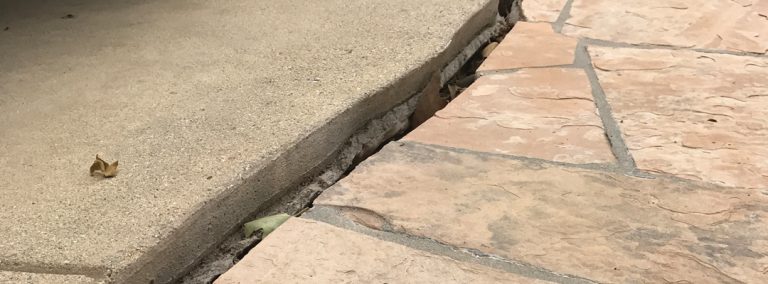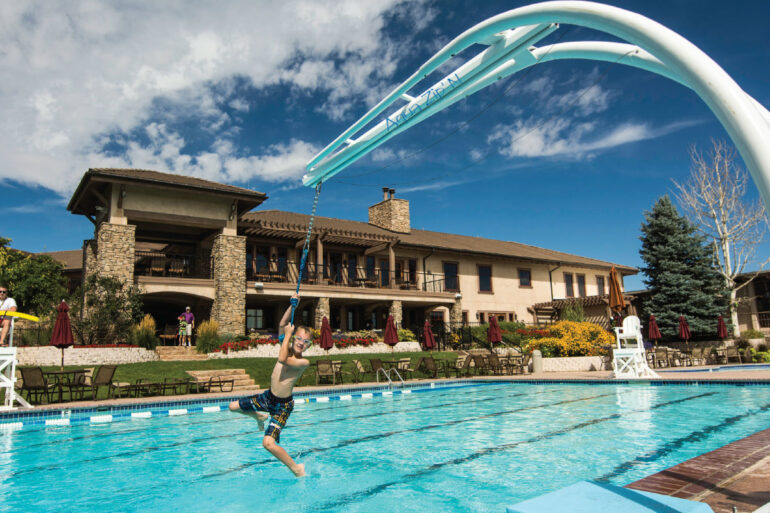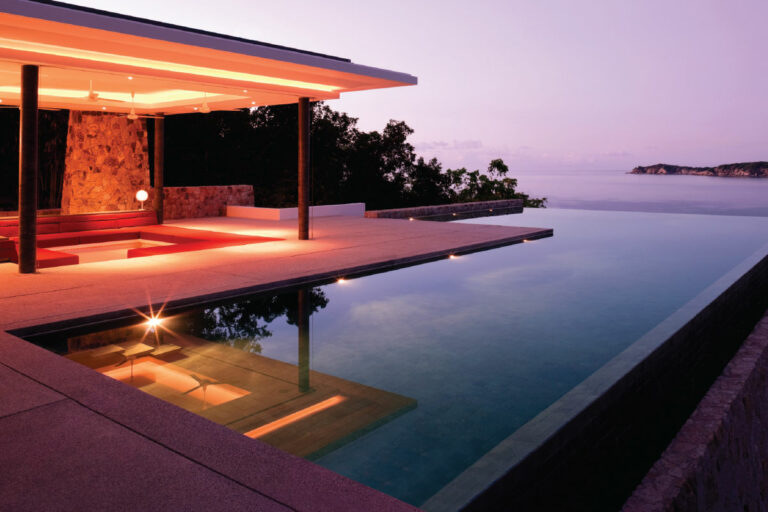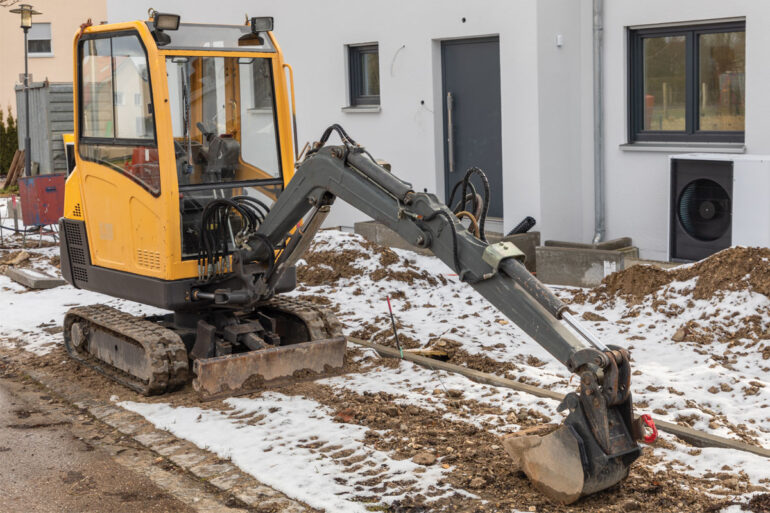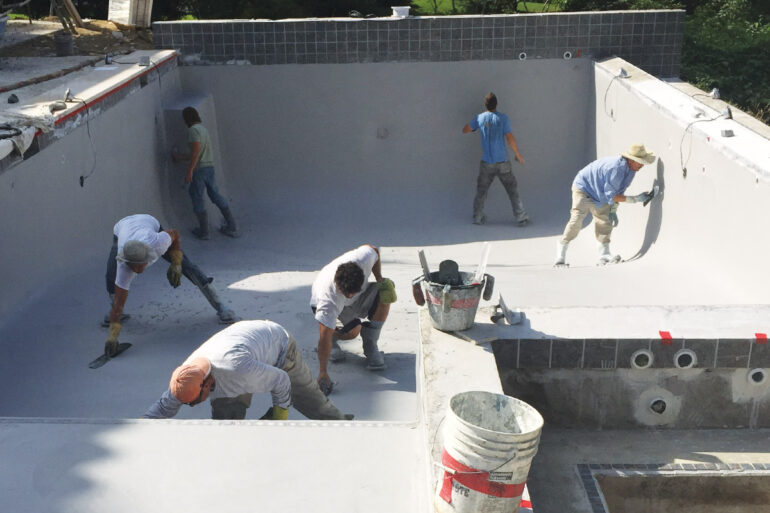3D Pool Pad
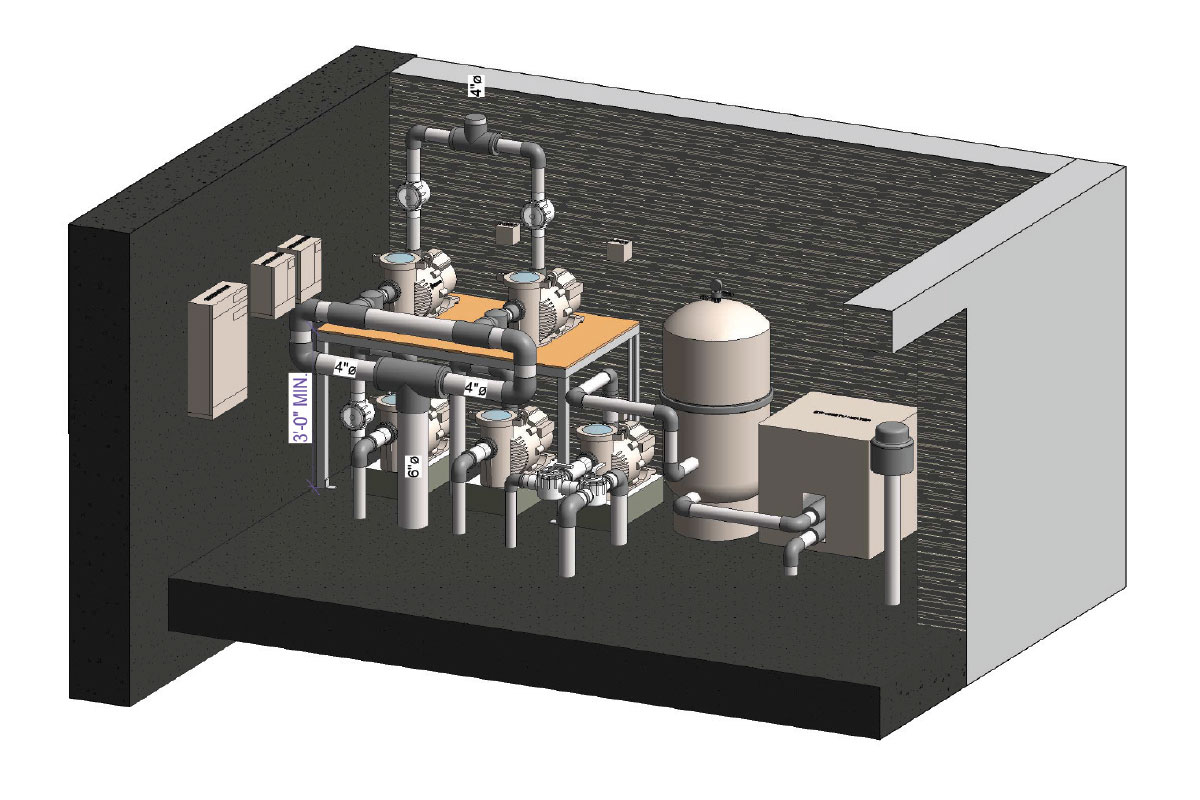
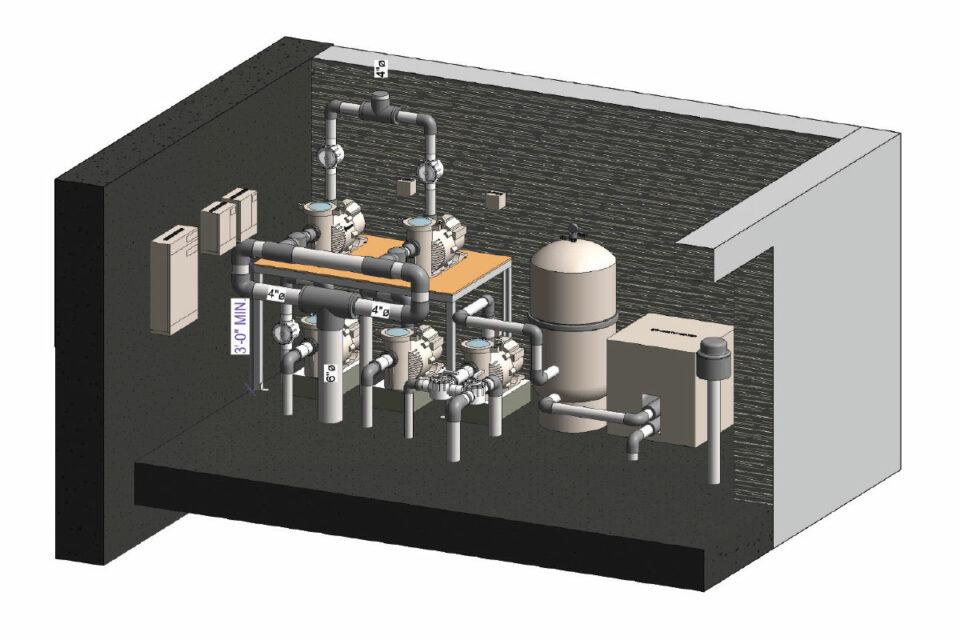
Pool pad design is an intricate task for builders to create an optimally functional and aesthetically pleasing equipment layout. Increasingly, builders are turning to three-dimensional design programs to make this process easier.
“[Designing with 3D] has multiple perks,” says Rick Chafey, co-owner of Red Rock Pools and Spas in Chandler, Arizona. “It gives us additional tools to be able to truly build a project virtually so that we can find and eliminate minor and major conflicts. For tight spaces with lots of equipment, we are able to run through multiple iterations in order to get the most accessible and efficient layout. And, once modeled, we can provide infinite custom sections, perspective details and elevations.”
The most commonly used systems within the pool industry are 3D AutoCAD, SolidWorks and Revit. In addition to providing 3D layout imaging, these design resources expedite parts of the building process, run simulations, document the process and in some cases can provide cost estimates.
However, utilizing these systems is not without barriers to entry.
If builders and technicians lack the computer and graphics skills to do these complex designs on their own, the process may require a subcontractor. Paolo Benedetti, principal of Aquatic Technology Pool & Spa in Morgan Hill, California, says his company uses a subcontractor for its CAD drafting and 3D modeling needs, and only sparingly.
The primary purpose for his company’s use of the imaging is to provide plumbers and equipment installers a visual representation of how everything is supposed to look, often in the form of printed copies.
“[Three-dimensional imaging] is most useful in providing precise penetration locations through walls or identifying conflicts with HVAC, sewer or other utilities,” Benedetti says. “Tight spaces also warrant the efforts of 3D layouts. [Otherwise, 3D design] is an unnecessary expense for 90% of our projects.”
While obtaining 3D equipment files from manufacturers expedites the modeling process for the builder, Benedetti says he’s encountered several manufacturers that don’t have these files available or are unwilling to share them.
Cost is the largest consideration for companies interested in utilizing 3D imaging technology. First there is the cost of software or annual usage subscriptions for programs. Comprehensive hardware will be needed to run these complex programs: Graphics cards, memory, display resolutions and high processing CPU are all hardware that must be up to the task. Training time will vary per individual or team.
Additionally, investing time and training into utilizing these systems is another barrier many builders may see as too large an undertaking. Alternatively, if you boast an individual or team with the aptitude for it, it may be a solid investment for expediting projects, cutting other costs and improving quality and accuracy in the installation process.
“SolidWorks is the most economical and easiest to learn, as it integrates well with AutoCAD,” Benedetti says. “Revit, while being very robust, requires a huge financial investment for software licenses and thousands of hours of training to master its elements.”
A stark contrast from Aquatic Technology, Red Rock Pools and Spas uses Revit for 90% of its design processes Chafey says. The company has four drafters fully versed in Revit and 3D modeling of both pools and architectural projects.
“It allows us to clearly define exactly how we want something installed and not have important decisions decided by others in the field,” Chafey says.
For architects and engineers, using these models from Red Rock Pools and Spas can help them spot conflicts such as structural beams in the way or pipes running into each other. Chafey says access to infinite perspectives on things like elevation differences expedites the process substantially.
Also, while Aquatic Technology struggles to get 3D equipment files from manufacturers, Chafey says Red Rock has seen an increase in the availability of files, in addition to the Red Rock drafters creating some on their own and even being tasked with doing so for some manufacturers.
The polar opposite approaches to 3D imaging between Red Rocks and Aquatic Technology capture why the use of this technology is currently being debated in the industry. If you have the time and resources, it can be a worthwhile investment, but the return on investment will vary from company to company.
“Although there is a huge learning curve to be able to convert to a full Revit office,” Chafey says, “for us it was totally worth it and has made us that much more effective for our clients and our trade partners.”

